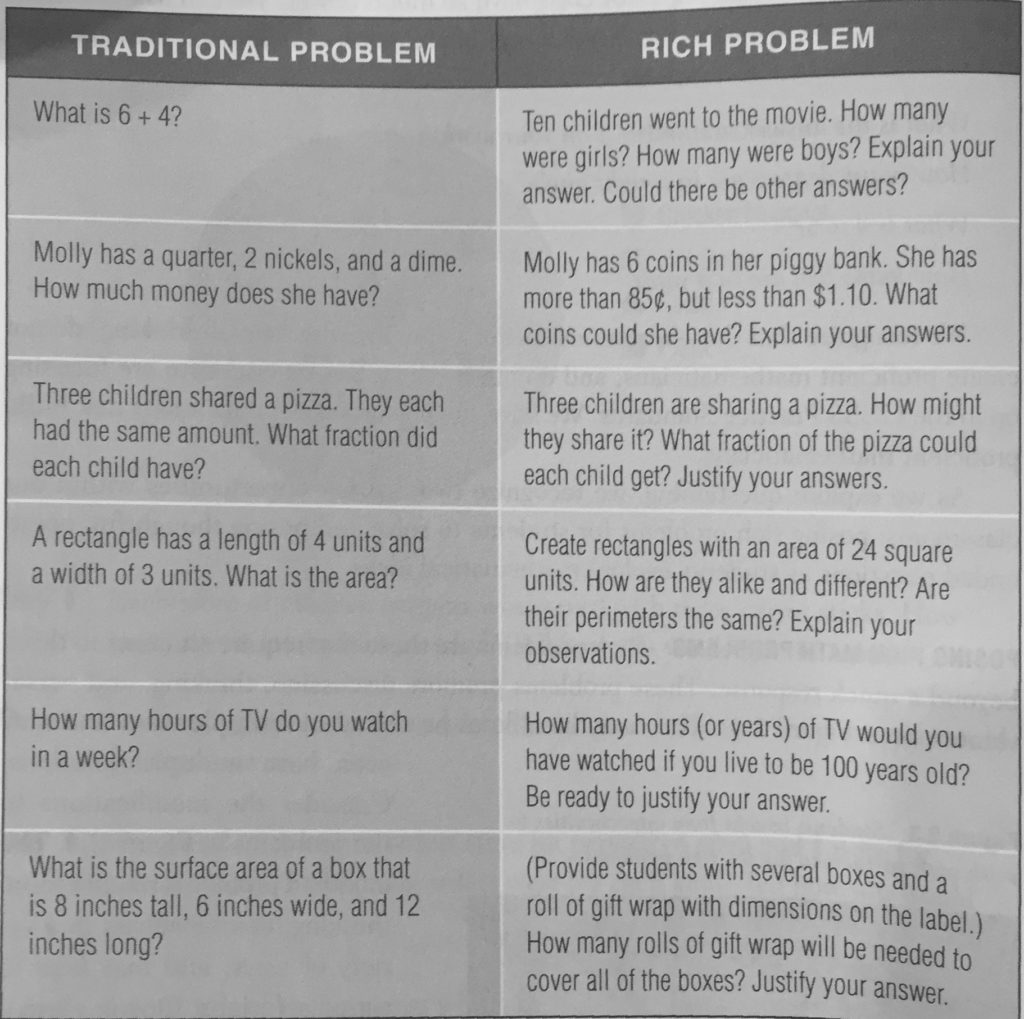We began by reviewing last night’s math homework using the “Jigsaw” strategy.
Then we moved on in our Functions and Algebra notes, and we learned about Dan Meyer’s 3-act problems. We looked at what makes proportional relationships special, and then pushed ourselves to solve problems based on proportions.
After lunch we discussed our responses to last night’s readings from Principles to Actions about questioning and eliciting student thinking. We used the reading to analyze the questioning practices of an 8th grade teacher leading students in the “Water Tank Task.” We both watched a video of her teaching and read a transcript episode.
We started our discussion of unit FA-3: Linear Relationships, but did not get past the first problem on currency conversion. We will pick up there Wednesday morning.
Math Homework:
- Create a “sequel” to one of the problems (1-5) on page FA2.12 that pushes the solver to use a systematic or efficient strategy to solve it.
- Revisit the milk problem on page FA2.12.
Pedagogy Homework:
- Look through your curriculum materials and identify a lesson that you might teach in the first few weeks of school. Refer to the picture below as a reference to find two “traditional problems” and rephrase them to make them “rich problems.” (Figure is from “Putting the Practices into Action” by O’Connell & SanGiovanni, published in 2013 by Heinemann).
- Also look through your curriculum materials and identify at least one lesson or topic that you teach that helps students build “floating capacity” for an idea we’ve discussed in the “Functions and Algebra” course.
- Read the “Upside-down teaching” article and think about how this connects to some of the time constraints we’ve discussed in class.

